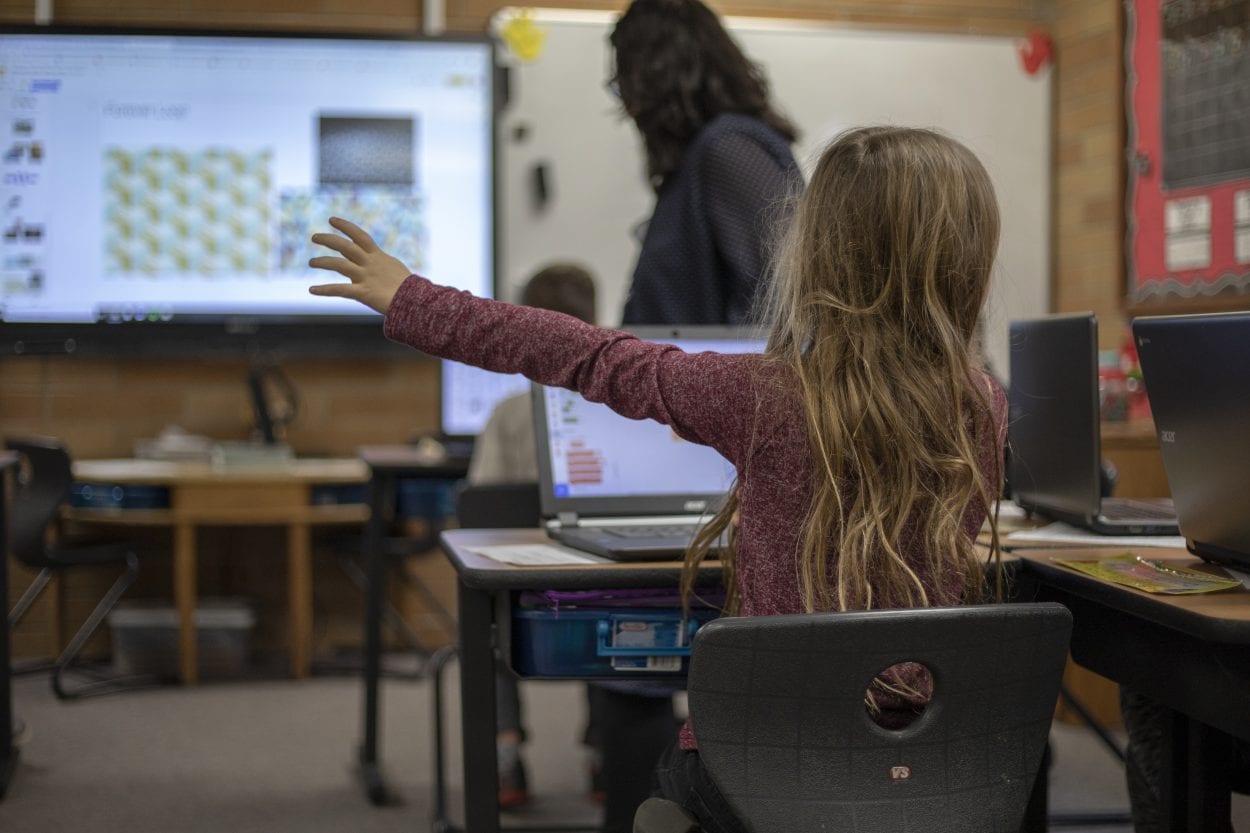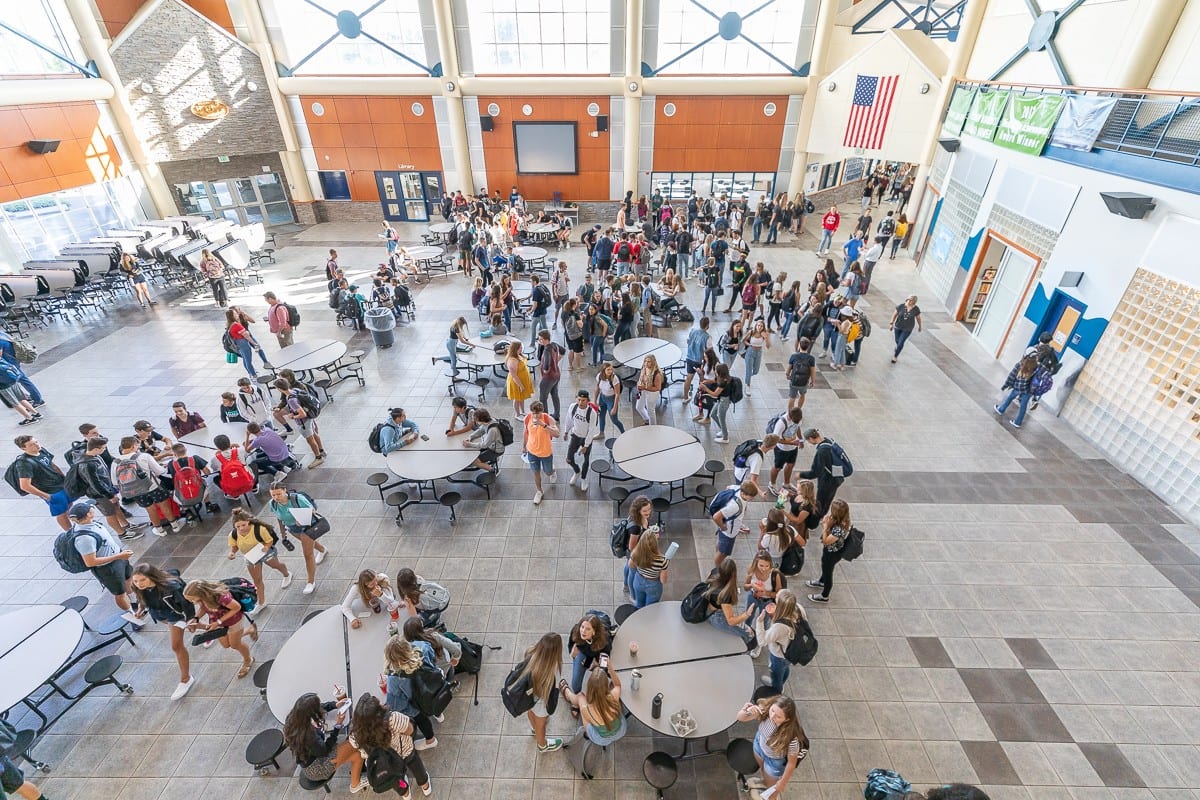School boards for each district will need to vote on the plan within the next couple of weeks
CLARK COUNTY — The superintendents of all eight Clark County school districts are recommending that their students begin the upcoming school year in much the same way as they ended the last one.
“The virus growth trajectory in Clark County and our surrounding region makes it clear that resuming school in-person this fall could result in more widespread infections,” said Vancouver Public Schools Superintendent Steve Webb in a release sent out by Educational Service District 112 on Wednesday afternoon. “That’s a risk we simply cannot take. Protecting the health and safety of our students and staff is our number one priority.”

During a board work session on Tuesday, Battle Ground Schools Superintendent Mark Ross called it “one of the most difficult decisions I’ve had to make.”
“For 39 years I have been in a building on opening day, either as a teacher or principal or superintendent,” said Ross. “This is a very difficult and actually emotional decision for me to have our kids start the school year remotely.”
Evergreen Schools Superintendent Mike Merlino echoed Ross’ sentiments, and said he realizes many parents will be upset at the decision.
“It’s a very divided country,” he told the school board during a work session on Tuesday evening. “Our priority always is in teaching our students the best way we possibly can, in a safe manner, and that’s ultimately what we will be doing at Evergreen.”
In choosing the Remote Learning 2.0 model, Evergreen School Board President Julie Bocanegra said, ”We appreciate the cooperation and support of our public health officials, as well as our staff, and neighboring school districts, in ensuring a community-wide response. We are doing what is best for our students, staff and community, with the goal to open our schools for in-person learning as soon as it is safe to do so.”

The recommendation by the county’s superintendents comes after numerous meetings with Clark County Public Health, as well as consultation with State Schools Superintendent Chris Reykdal.
“Clark County Public Health supports school superintendents who have made the very difficult decision to recommend starting the 2020-21 school year online,” said Dr. Alan Melnick, Clark County’s Public Health director and county health officer. “We all agree that in-person education is best; however, the data and science of COVID-19 suggest it’s just too dangerous to head back to the classroom right now.”
ESD 112 cited a recent peer-reviewed study out of the Seattle-based Institutes for Disease Modeling (IDM), which concluded that the relationship between reopening community, workplace and schools are intertwined.
“If community activity were to rise above 70 percent of pre-COVID activity,” the study concluded, “no amount of intervention in schools (masks, physical distancing and hand washing) would prevent the virus from spreading rapidly in the community.”
“We all play a role in stopping the spread of the virus and helping schools to return to in-person learning,” said Melnick. “By wearing a face covering, maintaining physical distancing and washing our hands frequently, we can help get kids back in the classroom.”
In response to concerns about shortfalls in the way distance learning worked, or didn’t work, the first time around, school districts are promising that Distance Learning 2.0 will be streamlined, provide more training for educators and parents, and include further investments in updated devices and internet connectivity to help families in need.
Clark County school districts also will follow requirements from the Washington State Office of the Superintendent of Public Instruction (OSPI) to:
- Work with community partners to identify child care options for school-aged students whose families don’t have the option to stay home with a child each day;
- Address gaps in connectivity and technology access so each student has sufficient opportunity to continue their learning outside of the classroom;
- Continue providing school meals to the students who rely on them; and
- Utilize local data to determine which of their students need additional intensive learning supports, and provide those supports remotely if possible or in-person when that is the only effective delivery method.
- Have weekly schedules for each student, daily engagement or assigned work for each student, and requirements for daily attendance.
- Meet the number of instructional days and hours required in state law, consistent with the State Board of Education’s rules on the definition of an instructional hour.
“Distance Learning 2.0 is an improved and more accountable model than the version experienced by families and students this past spring,” said Washougal School District Superintendent Mary Templeton. “Clark County educators are committed to ensuring students continue to make progress in their learning during the pandemic, and Distance Learning 2.0 reflects that commitment.”
The various school boards will need to approve a distance learning plan no later than two weeks before the beginning of the new school year. The superintendents jointly decided to advise that a hybrid educational model, which would include limited in-person education augmented by online learning, would begin no sooner than Phase 4, with a plan for transitioning beginning as soon as the county is cleared to enter Phase 3.
“Certainly, the hope was we would be able to have kids on site,” added Merlino. “Everyone knows kids in school is the number one priority. At the same time, we have to be able to do that in a safe manner for both the students and for our staff.”
In districts that conducted community surveys, a majority of parents said they would be OK with their children attending classes in-person, at least part of the time. However, a majority of teachers said they would prefer to continue online learning until they felt it was safer to return to the classroom.
The superintendents said a primary concern they heard, both from educators as well as parents, centered on how a potential outbreak could disrupt classroom learning. If a teacher or student were to become infected, the county would expect that the confirmed case, as well as any close contacts, would need to self-isolate for up to 14 days. The potential was high that whole classes, or even entire buildings, would need to be shut down during an active outbreak.
“School districts will continue to work closely with public health departments to transition eventually to a hybrid learning model, which combines in-person learning with remote learning,” said Ridgefield School District Superintendent Nathan McCann. “The transition to in-person education will depend heavily on how much the virus is spreading in the community and the steps we take now to slow the spread of COVID-19.”




